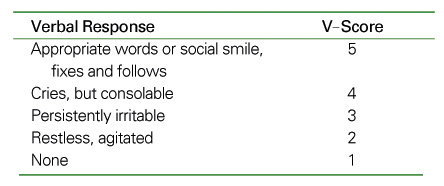 |
 |
- Search
| J Korean Med Assoc > Volume 51(3); 2008 > Article |
Abstract
The often quoted statement that children are not simply small adults remains the central premise of pediatric trauma care. Although multiple traumas remain the leading cause of death among children, fewer resources and less attention have been directed to the treatment of an injured child than to that of an injured adult. Insufficient training of medical personnel and lack of expertise in the management of injured children might be the key factors contributing to the disability and deaths in such children. Although the principles of resuscitation of injured children are similar to those for adults, the basic concepts of advanced life support that have been used for adults remain applicable and critical for injured children. However, we need to know the differences in cardiorespiratory variables, airway anatomy, response to blood loss, and thermoregulation, and special equipments are essential for successful initial resuscitation. Cerebral, abdominal, and thoracic injuries are still the major causes of mortality, morbidity, and disability among traumatized children. Brain parenchymal damage is caused by secondary injuries, such as hypovolemia and hypooxygenemia, are sometimes preventable and intracranial pressure should be maintained within the normal range. The efforts to keep the spleen in children with trauma may make the management of abdominal trauma complicated. Although children seem to be small and weak, our efforts and skill for pediatric life support will make a good result.
References
1. Schofeld PS, Baker MD. Management of cardiopulmonary and trauma resuscitation in the pediatric emergency department. Pediatrics 1993;91:726-729.
2. O'Neill JA, Boswick JA. Special pediatric emergencies: Emergency care 1981;Philadelphia: Saunders. 137-137.
3. American Academy of Pediatrics. Advanced Pediatric Life Support 1998;3rd ed. American Academy of Pediatrics: American College of Emergency Medicine. 26-26.
4. Spivey WH. Intraosseous infusions. J Pediatr 1987;111:639-643.
5. Shoor PM, Berryhill RE, Benumof JL. Intraosseous infusion: Pressure-flow relationship and pharmacokinetics. J Trauma 1979;19:772-774.
6. Glaeser PW, Losek JD. Emergency intraosseous infusions in children. Am J Emerg Med 1986;4:34-36.
7. Rosetti VA, Thompson BM, Miller J, Mateer JR, Aprahamian C. Intraosseous infusion: An alternative route of pediatric intravascular access. Ann Emerg Med 1985;14:885-888.
8. Strauss RG, Anderson KC, Ness PM. Neonatal transfusion: Scientific Basis of Transfusion Medicine 2000;Philadelphia: WB Saunders. 321-335.
9. Stern SA, Dronen SC, Birrer P, Wang X. Effect of blood pressure on hemorrhage volume and survival in a nearfatal hemorrhage model incorporating a vascular injury. Ann Emerg Med 1993;22:155-163.
10. Chestnut RM. Avoidance of hytension: Conditio sine quanon of succesful severe head injury management. J Trauma 1997;42:S. 4-9.
11. Carrico CJ, Canizaro PC, Shires GT. Fluid resuscitation following injury: Rationale for the use of balanced salt solutions. Crit Care Med 1976;4:46-54.
12. Ernest ME, David FV, Kenneth ML. Trauma 2004;5th ed. New York: McGraw-Hill Companies, Inc.. 1021-1039.
13. Stern L, Lees MH, Leduc J. Environmental temperature, oxygen consumption, and catecholamine excretion in newborn infants. Pediatrics 1965;36:367-373.
14. Rowe MI, Taylor M. Transepidermal water loss in the infant surgical patient. J Pediatr Surg 1981;16:878-881.
15. Tilford JM, Simpson PM, Yeh TS, Lensing S, Aitken ME, Green JW, Harr J, Fiser DH. Variation in therapy and outcome for pediatric head trauma patients. Crit Care Med 2001;29:1056-1061.
16. Lescohier I, DiScala C. Blunt trauma in children: Causes and outcomes of head versus extracranial injury. Pediatrics 1993;91:721-725.
17. Muizelaar JP, Ward JD, Marmarou A, Newlon PG, Wachi A. Cerebral blood flow and metabolism in severely head-injured children part 2: Autoregulation. J Neurosurg 1989;71:72-76.
18. Prough DS. Therapy of patients with head injuries: Key parameters for management. J Trauma 1997;42:S. 10-18.
19. Rosner MJ, Andrews BT. Pathophysiology and management of management of raised intracranial pressure: Neurosurgical Intensive Care 1993;New York: McGraw-Hill Companies, Inc.. 57-112.
20. Khanna S, Davis D, Peterson B, Fisher B, Tung H, O'Quigley J, Deutsch R. Use of hypertonic saline in the treatment of severe refractory posttraumatic intracranial hypertension in pediatric traumatic brain injury. Crit Care Med 2000;28:1144-1151.
21. Roux P, Fisher RM. Chest injuries in children: An analysis of 100 cases of blunt chest trauma from motor vehicle accidents. J Pediatr Surg 1992;27:551-555.
22. Canty TG Sr, Canty TG Jr, Brown C. Injuries of the gastrointestinal intestract from blunt trauma in children: A 12-year experience at a designated pediatric trauma center. J Trauma 1999;46:234-240.
23. Ein SG, Shandling B, Simpson JS, Stephens CA. Nonoperative management of traumatized spleen in children: How and why. J Pediatr Surg 1978;13:117-119.
24. Wesson DE, Filler RM, Ein SH, Shandling B, Simpson JS, Stephens CA. Ruptured spleen-when to operate? J Pediatr Surg 1981;16:324-326.
25. Furnival RA, Woodward GA, Schunk JE. Delayed diagnosis of injury in pediatric trauma. Pediatrics 1996;98:56-62.
26. Kissoon N, Dreyer J, Walia M. Pediatric trauma: Differences in pathophysiology, injury patterns and treatment compared with adult trauma. Can Med Assoc J 1990;142:27-34.
- TOOLS
-
METRICS

-
Related articles in
J Korean Med Assoc -
Essential Points for Examination of the Injuries1998 March;41(3)
The Prevention and Rehabilitation of Soccer Injuries2005 October;48(10)














